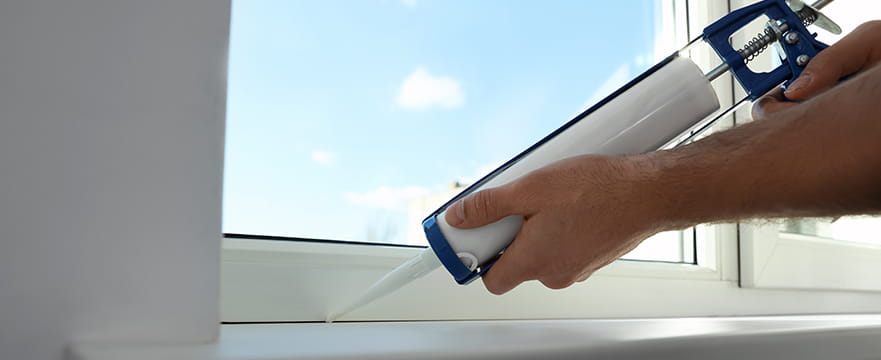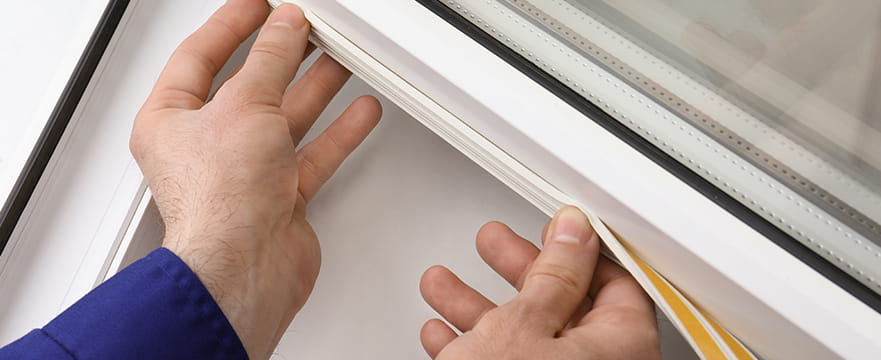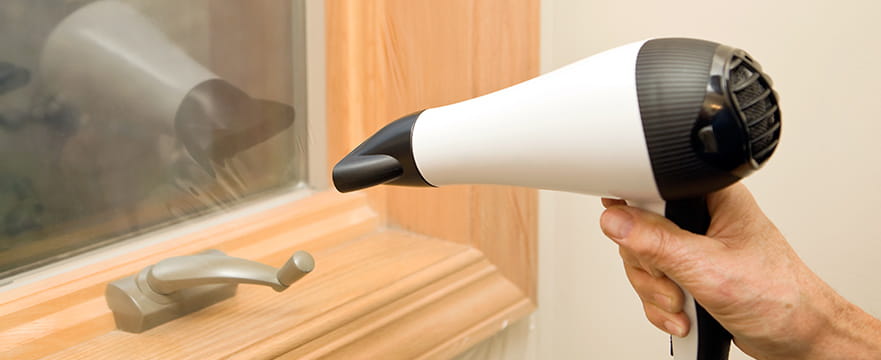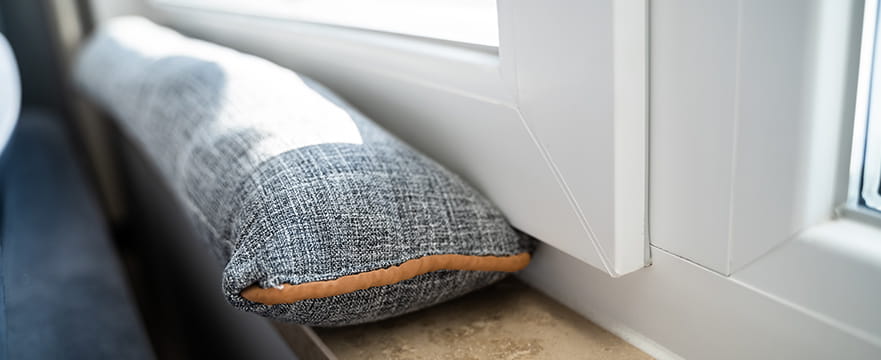Layer blinds and curtains
To get the best reduction in heat loss and to stop cold air and draughts a layered approach helps to make a difference.
Think like the Georgians who had shutters with heavy drapes. Or, blinds and curtains combinations for more thermal insulation.
Use sunlight and daylight
Timing of closing and opening curtains, blinds and shutters is also important and can make a difference in heat retention and heat loss.
Closing curtains and shutters as soon as the sun goes down will help to retain the heat in the room. Always open the curtains or shutters as soon as the sun comes up to take advantage of any solar gain to warm the room for free.
However, if you have a north-facing room that can't benefit from direct sunlight it can be more of a challenge to heat the room. For those rooms, it might be best to add additional insulation to the window (as below) or consider triple glazed windows.

Caulk the edges
Research shows that if it's windy outside, heat loss from the home increases and heat demand peaks. The best way to combat the effect that wind can have is to tackle draughts in the home.
The Energy Saving Trust reports that draught proofing doors, windows and gaps can save £90 a year (for an average 3 bed semi).
Plugging any draughts around the edges of badly fitted windows, or old window frames can stop the little gusts of air that in winter will be ice cold.
Run your hand around the frames and you can feel where there are any draughts. Simply use a quality caulk or silicone to fill in the gaps around the frame.

Foam tape
Instead of using a caulk, a self-adhesive foam tape is a quick and easy fix that will help to stop any draughts.
Great for older windows, or window openers that don't have a perfect seal to close, foam tape can seal gaps in warped door and window frames.
Measure and cut the tape to fit the specific size of the gaps, ensuring a snug fit to prevent draughts effectively.
According to Tesa, a provider of insulation solutions including draught excluders, using their products can lead to a reduction of up to 40% in energy costs.

Window film
Window film is effectively like a thick cling film wrap for windows.
A window film kit typically includes a plastic shrink film that's applied to the indoor window frame with double-sided tape. After installation, you use a hair dryer to shrink the film, removing wrinkles and creating an airtight barrier.
The film creates an insulating barrier, reducing heat loss. It's claimed that a quality window film can reflect up to 30% of the room's heat back into the room in the winter. Although cheap film kits are probably less than this.
For a quick and relatively cheap solution to provide extra window insulation, this is well worth considering.
They are particularly useful for single-glazed windows, or where upgrading to triple glazing isn't feasible. However, window film does look like you have cling film on your window.
Bubble wrap
Another cheap hack to insulate windows in rooms that you might not use is to apply a super-insulating layer to the glass.
Bubble wrap is made of air pockets that act as insulators trapping heat and reducing heat loss.
To apply, mist water onto the window glass and press the flat side of the bubble wrap against it. This method is especially useful for seldom-used rooms where aesthetics are less of a concern.
Whilst ugly to look at from both the inside and outside, bubble wrap can be a temporary and super cheap insulator for your windows in extreme situations.

Draught excluder
A trick that your grandmother or great-grandmother would have used is to fill fabric tubes with insulating material, like rice or old clothing. Sometimes called draught snakes or sausage dogs.
Placed at the base of doors or windows to stop cold air from entering, they can be homemade from old clothing or towels, making them a sustainable and cost-effective solution.
A great solution for anyone who likes crafting and wants to add a decorative touch.
Secondary glazing
For anyone living in a listed building, the main drawback of not being able to replace original single glazed windows is most apparent in winter.
Original windows made from leaded panes, Crittal windows, or wooden sash windows all look beautiful. However, they are not energy efficient and the heat loss through single glazing can be nearly four times as much as triple glazing.
The only effective solution for listed buildings is to install secondary glazing. This ranges from a DIY plastic frame that pushes into place to a made-to-measure fitted frame with glass.
The gap created between a window and the secondary glazing creates a thermal barrier that has two main benefits. The gap helps the window to reduce heat loss and is effective at noise reduction.
Formal testing demonstrates that secondary glazing can reduce heat loss by 63%.
Energy efficient glazing
Based on U-values, Everest energy-efficient triple glazing is 200% more energy efficient than old double glazing and 65% more efficient than Everest energy-saving double glazing.
The U-value difference between single glazed windows and double or triple glazing is as much as 4.8 to 0.80 W/m2K.
By installing a window with a low U-value you will have a noticeable difference in room comfort and lower heating bills.